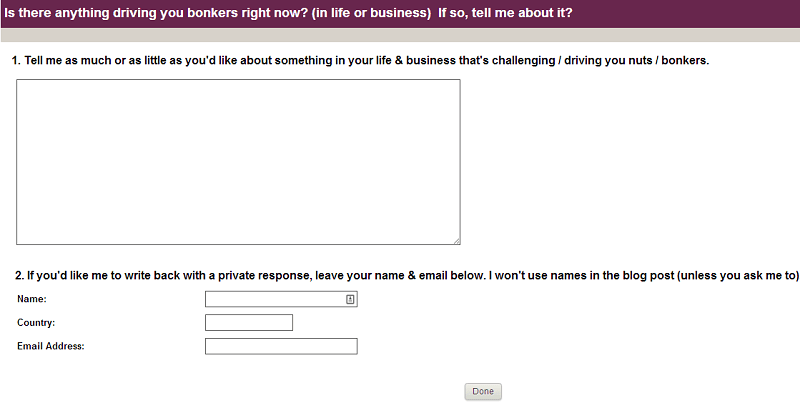Running an online business can be extremely rewarding—and massively expensive. But just because your friends and colleagues are using fancy tools and programs and have big budgets, doesn’t mean you have to, too. Some will even say you need the latest and greatest “Must Have” tools to be successful. I’d like to prove them wrong. Here’s how to run your business on a lean budget:
1. Day-to-day tools
Use tools you already have on your computer: whether pre-installed or purchased, just dust them off again. Most of us have purchased programs in the past (like Microsoft Office, QuickBooks, Quicken, and Photoshop) but don’t use them on a regular basis. Do a quick search of the programs already on your hard-drive (or on the computer you’ve got in storage) and then do an equally important YouTube search for training videos on that software. Put those tools to work in your business.
Also look for tools like Skype, Google Voice, Gmail, and FaxZero (for those occasional outgoing faxes) for daily communication. And also check out Box.com or Copy.com for large, free, online storage accounts. Some of the most reliable bridge lines are also free, such as Speek.com and FreeConferenceCallHD.com. Use them for consulting calls, tele-seminars or anything that would benefit from a “bridge line”.
2. Industry-specific tools
Do a Google search for “[name of expensive program] alternative”. Or, jump into a co-op where people are purchasing a bulk license of your industry-specific software. If you’re not a graphic designer, but need a program like Photoshop, search for Gimp.org or Paint.NET with .psd.
If you create beautiful products that sell on Etsy, you’ll need stellar images of your products. Borrow a camera from a friend or rent one from a website like Loanables.com or SnapGoods.com. Similarly, if you need a studio to take product shots, consider asking around at local shops to borrow their light box for the afternoon.
3. Streamline
Go through your PayPal and credit card statements for the past 90–180 days and look for recurring expenses. Cut out anything that isn’t essential. Maybe even cut out what you think is essential and find another free alternative.
Oftentimes, we pay $9.99 per month or $30 per month for memberships that we only use a few times per year. Ask yourself if it’s creating a return on investment for your business. Is that $9.99 each month really contributing $120 per year back into your business, preferably more? It should be.
If you are using your subscriptions, check to see if you can pay an annual fee and save money throughout the year. Or, buy it outright. Often companies will charge $30 per month but sell an annual subscription for less than $200 (saving $160 over the year).
If you can purchase outright, even better. Upgrade every two to three years and save even more. Look at PayPal six-month payment terms if you need to spread out payments of the bigger purchases.
4. Roll up your sleeves
Most tasks that need to be done in your business can be done quickly if you have systems in place: it’s the procrastination and thinking about it that takes time. Create a clear action plan and set aside time every day to get closer to your big dream goal and closer to the income goals you set.
5. Leverage PR opportunities
Whenever possible, snap up opportunities to contribute to a news article, blog post, or book. Offer to write articles for local newspapers or magazines, and utilize resources like HARO and SourceBottle where journalists are regularly looking for content.
Set up a page on your website called “Media” (or similar), and include your bio and high-quality images, so you can point press to it easily when the opportunity arises. If you make it easy for yourself and budget in 45 minutes a week for this kind of activity, your business will thank you for it later.
6. Training
Every day an entrepreneur is building a new program or course. They often need beta testers to run through their program at a reduced rate, or for free. Make yourself available to them, help them make their program better and get the training your need to improve your business skills. Also, check out websites like Udemy or CreativeLive for upcoming classes that are offered completely free. Sometimes you must attend live to access the free version, but there are perks, like mingling with other attendees and making new business connections.
7. Product development
Think it’s tricky to figure out what your potential clients will spend money on? Try this on for size! Create a one-question survey at SurveyMonkey or Google Forms and ask people to answer the question. You’ll be surprised at the answers you receive, and how easy it will be to create your next product or program. Instead of waiting months to start generating revenue, consider launching and building the course or program as you go through each week.
8. Online presence
It used to cost a fortune and take months to create a website. It doesn’t anymore. A clean WordPress website with a sales funnel automated with autoresponders (like MailChimp or AWeber) and shopping cart plugins (like WooCommerce or easydigitaldownloads.com), and semi-automated social media (through HootSuite or SocialOomph) can cost less than $10 per month. YouTube, Facebook Pages, Twitter and Pinterest can all aid in bumping up your online presence and creating a cohesive brand.
9. Stay lean
Just because you’re making more money now, doesn’t mean you need to go back to your old ways. The next time you need to scale up, or make a pivot change in your business you’ll be grateful for your low overhead expenses.
What other methods do you use to keep costs low in your business? Share in the comments below.
















































